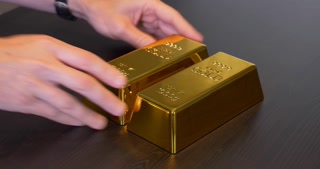Gold volatility after PCE inflation data release(XAU/USD) dipped slightly on Friday, trading in the $2,320s, just before the release of the key economic data: the US Personal Consumption Expenditures (PCE) Price Index for May.
Understanding PCE Inflation Data
The PCE is the Federal Reserve’s (Fed) preferred measure of inflation. Since the Fed sets interest rates, the PCE results could influence future rate decisions. Gold is sensitive to interest rate changes because it is a non-interest-bearing asset. Higher rates decrease Gold’s appeal, while lower rates enhance it.
Anticipated Volatility from PCE Data
Gold volatility after PCE inflation data release is likely to experience volatility after the release of the US PCE data at 12:30 GMT. Analysts expect PCE inflation to drop to 2.6% year-over-year (YoY) in May from 2.7% in April, and to remain steady at 0.0% month-over-month (MoM) after a 0.3% rise in April. Core PCE is anticipated to cool to 2.6% YoY from 2.8% and to 0.1% MoM from 0.2%.
Jim Reid, Global Head of Macro at Deutsche Bank, noted, “Our US economists predict core PCE will rise by +0.17% (MoM), based on current CPI and PPI data. This would bring the year-over-year rate to 2.63%, the lowest in over three years.”
Insights from Fed Officials
Comments from Federal Reserve interest rates officials also impact Gold prices. Atlanta Fed President Raphael Bostic mentioned future rate cuts, indicating a more definitive plan than previous vague statements. He expects an interest rate cut in the fourth quarter, followed by four quarter-point cuts in 2025. Bostic dismissed concerns about a weakening labor market and noted a potential cooling in high services-sector inflation.
Conversely, Fed Board of Governors member Michelle Bowman was cautious, stating, “The Fed is not yet considering a rate cut.” Market indicators, like the CME FedWatch tool, suggest a 64% chance of a rate cut at or before the Fed’s September meeting.
Gold’s Long-Term Prospects
Gold’s long-term outlook remains positive, driven by geopolitical uncertainties and economic challenges, which increase its appeal as a safe haven. Its relationship with the US Dollar (USD) is complex; a strong USD can lower Gold demand, but it also boosts demand from Asian central banks hedging against currency devaluation.
The BRICS nations are using Gold as an alternative to the USD for global trade. Joy Yang, Head of Index Product Management & Marketing at MarketVector Indexes, stated, “Global trends suggest a rise in Gold prices, potentially reaching $2,400, especially if the Fed starts cutting rates.”
Technical Analysis

Gold recently broke above a downsloping trendline, invalidating a bearish Head and Shoulders (H&S) pattern. If this trend continues, Gold could rise to $2,369 and potentially $2,388. However, a break below the $2,279 level could trigger a reversal, with targets at $2,171 and $2,105.
In the short and medium term, Gold’s trend may be sideways, but the long-term trend remains upward.
For more in-depth updates on Gold, visit Daily Gold Signal and explore Daily Gold Updates.





